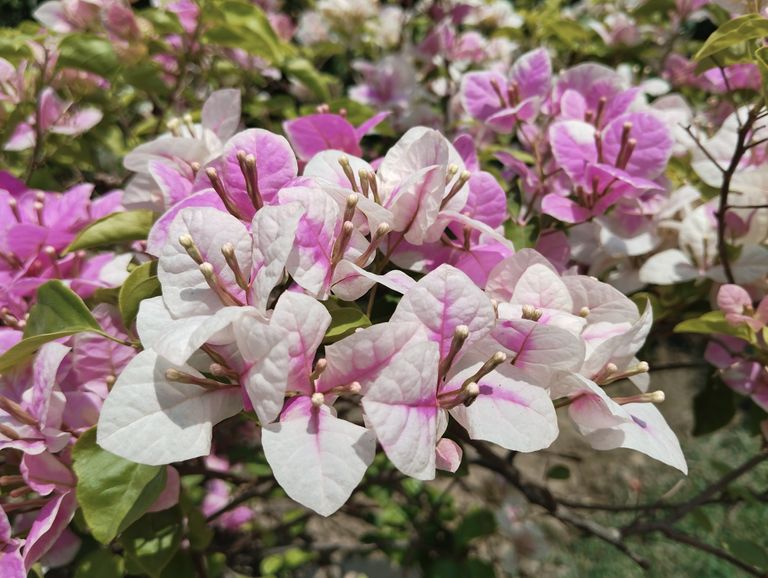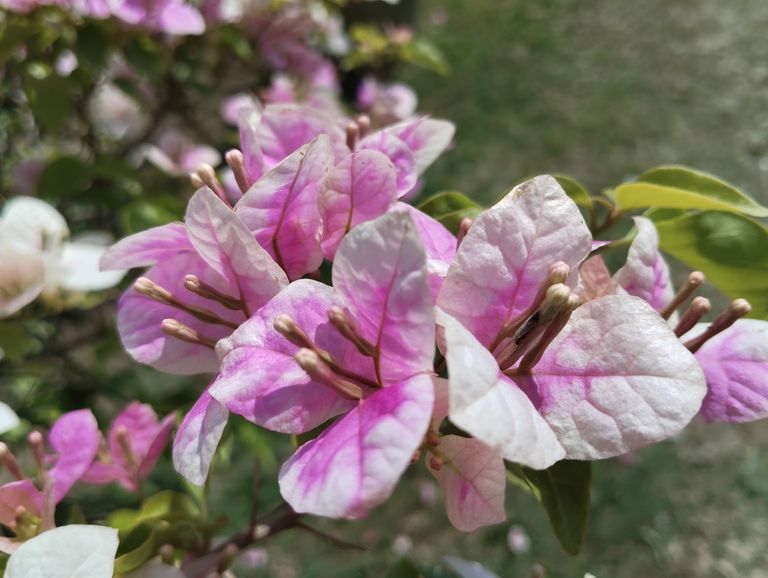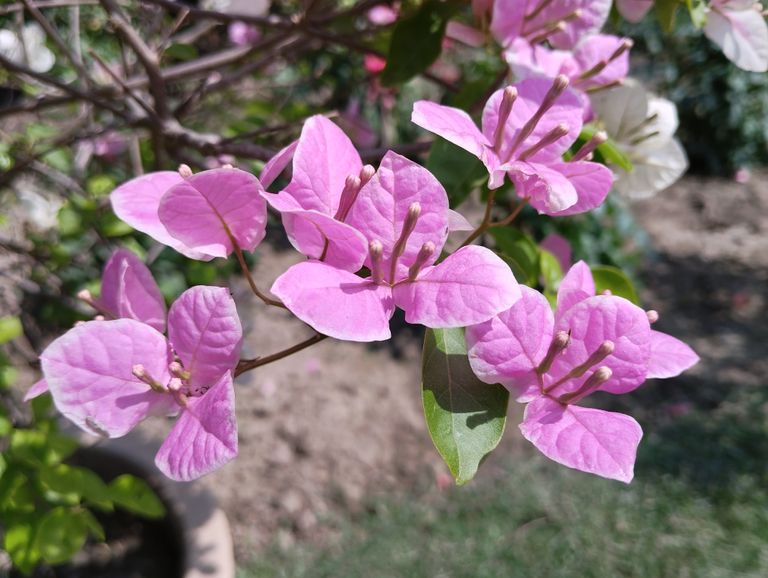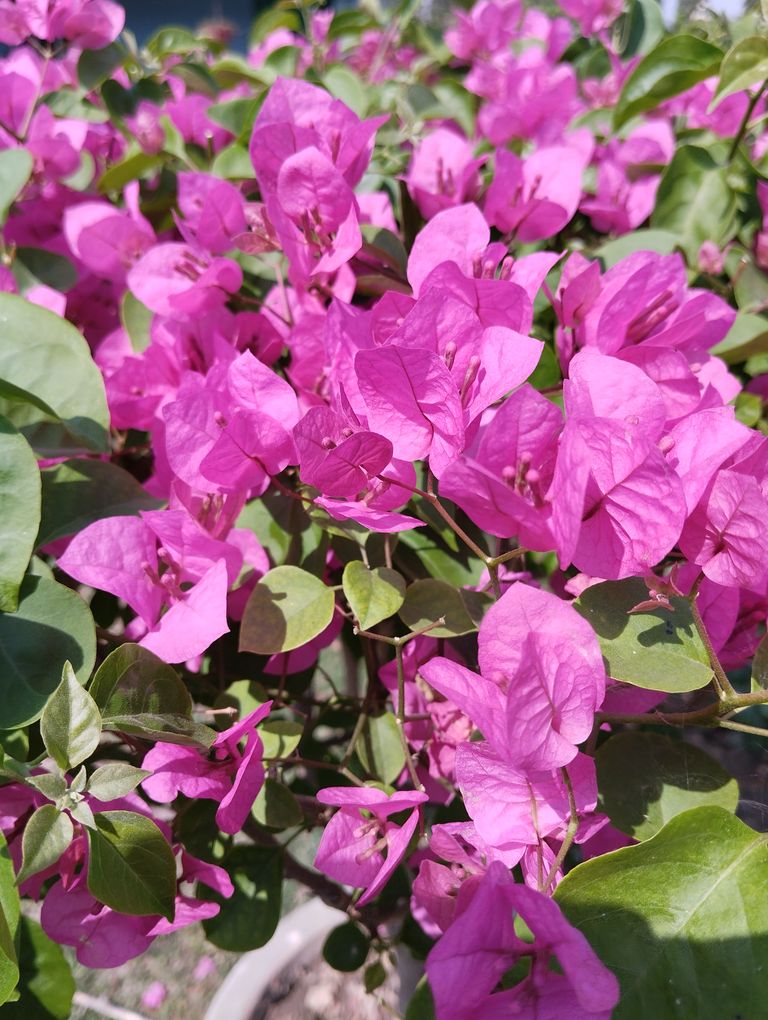
Flame of the Forest The Enchanting Beauty of Krishnachura Flower.
Nature has its own way of painting landscapes with mesmerizing colors, and one of its finest masterpieces is the Krishnachura flower. Known as the Flame of the Forest, this vibrant red-orange flower creates breathtaking scenery wherever it blooms. Scientifically called Delonix regia, the Krishnachura tree is one of the most striking flowering trees in tropical and subtropical regions.
Let’s explore the fascinating world of Krishnachura—its characteristics, cultural significance, uses, and ecological importance.
- Introduction to Krishnachura
Krishnachura, also known as the Royal Poinciana or Flamboyant Tree, is a species of flowering tree in the pea family, Fabaceae. Native to Madagascar, it has spread across tropical regions worldwide, thriving in warm climates. The tree is famous for its stunning flowers, which bloom in bright red, orange, and sometimes yellow hues, creating a fiery canopy that stands out against the green foliage.
Botanical Information:
Scientific Name: Delonix regia
Family: Fabaceae (Legume family)
Common Names: Krishnachura (Bengali), Royal Poinciana, Flamboyant Tree, Flame Tree
Native Region: Madagascar
Blooming Season: Late spring to early summer
The Krishnachura tree is deciduous, meaning it sheds its leaves seasonally. It grows rapidly, reaching a height of 30–40 feet, with an expansive umbrella-shaped canopy that provides ample shade.
- The Spectacular Bloom of Krishnachura
One of the most striking features of Krishnachura is its breathtaking flowers. The tree bursts into bloom during late spring and early summer, covering itself with clusters of bright red-orange flowers. Each flower consists of:
Four spoon-shaped petals, around 3–4 cm long
A fifth petal, slightly larger, adorned with yellow or white streaks
Long stamens, which extend outward, giving the flower a feathery look
These flowers attract bees, butterflies, and birds, playing a vital role in pollination. The vibrant colors and wide-spreading branches make the tree an ideal ornamental plant in parks, gardens, and avenues.
- Cultural and Symbolic Significance
Krishnachura holds a special place in many cultures. In Bengal, it is a symbol of passion, love, and beauty. The fiery red blossoms are often associated with poetry, romance, and nostalgia. Many Bengali poets and artists, including Rabindranath Tagore, have referenced the Krishnachura in their works.
Krishnachura in Literature and Art
In Bengali poetry, the flower symbolizes the arrival of summer and the intensity of love.
Many songs and paintings depict lovers walking under a Krishnachura tree, lost in its beauty.
The tree is often planted near schools and colleges, where students create memories under its shade.
In other cultures, such as in the Caribbean and Southeast Asia, the tree represents prosperity, warmth, and celebration.
- Uses and Benefits of Krishnachura
Beyond its aesthetic appeal, the Krishnachura tree offers several practical benefits:
A. Environmental Benefits
Provides shade: The tree’s wide canopy makes it an excellent shade provider in hot climates.
Prevents soil erosion: Its roots stabilize the soil, especially in tropical regions prone to erosion.
Supports biodiversity: The flowers attract bees, butterflies, and birds, promoting ecological balance.
B. Medicinal Uses
In traditional medicine, different parts of the tree are used for healing purposes:
Bark and seeds have antibacterial properties and are used in herbal remedies.
Leaves are sometimes used in traditional medicine for treating fevers and skin infections.
C. Timber and Other Uses
The wood is used for small-scale furniture and crafting.
In some regions, Krishnachura pods are used for making natural dyes.
Despite its many benefits, the tree’s wood is not very strong, so it is rarely used for heavy construction.
- How to Grow and Care for a Krishnachura Tree
If you want to plant a Krishnachura tree in your garden, follow these simple guidelines:
A. Climate and Soil
Grows best in tropical and subtropical climates
Prefers well-drained, sandy, or loamy soil
Requires full sunlight for optimal blooming
B. Planting and Watering
Plant the tree during the spring season.
Water regularly during the initial growing phase, but avoid waterlogging.
Once matured, the tree becomes drought-resistant and requires minimal care.
C. Pruning and Maintenance
Prune the tree once a year to remove weak or overcrowded branches.
Keep the area around the tree clean to prevent pest infestations.
Since Krishnachura trees grow rapidly, they need occasional trimming to maintain their shape and structure.
- Ecological Concerns and Challenges
Despite its beauty, Krishnachura has some challenges:
Invasive in some regions: In certain areas, the tree spreads rapidly, competing with native plants.
Weak branches: The tree’s limbs are brittle and prone to breaking in strong winds or storms.
Short flowering season: While spectacular, the bloom lasts only a few weeks each year.
Urban planners and gardeners need to plant Krishnachura strategically to avoid issues related to space and maintenance.
- Conclusion: A Tree of Passion and Beauty
The Krishnachura tree is more than just a flowering plant—it is a symbol of love, warmth, and artistic inspiration. Its brilliant red blossoms ignite the landscape, making it one of the most loved trees in tropical regions. Whether planted in city streets, university campuses, or countryside gardens, it continues to captivate hearts and inspire generations.
If you ever find yourself beneath a Krishnachura in full bloom, take a moment to admire its fiery elegance—it’s a fleeting masterpiece of nature.
Did you enjoy learning about the Krishnachura flower? Share your thoughts in the comments below.

Benefits of the Krishnachura Flower (Royal Poinciana)
The Krishnachura flower (scientifically known as Delonix regia), also called the Royal Poinciana, is one of the most beautiful flowering trees in tropical and subtropical regions. Its fiery red-orange blossoms create a breathtaking view, especially during the summer. However, beyond its aesthetic appeal, Krishnachura offers numerous benefits in medicine, the environment, and culture.
In this blog, we will explore the health benefits, environmental contributions, cultural significance, and other advantages of the Krishnachura flower.
- Medicinal Benefits of Krishnachura Flower
For centuries, different parts of the Krishnachura tree—flowers, leaves, bark, and seeds—have been used in traditional medicine. Here are some key medicinal benefits:
A. Anti-inflammatory Properties
Krishnachura flowers and leaves contain bioactive compounds that help reduce inflammation. Traditional medicine practitioners use extracts from the tree to treat swelling, arthritis, and joint pain.
B. Natural Pain Reliever
The bark and leaves of the Krishnachura tree are used to make herbal concoctions that help alleviate headaches, body pain, and muscle soreness.
C. Treatment for Fever and Respiratory Issues
Krishnachura bark is sometimes used in Ayurvedic and folk medicine to reduce fever and treat respiratory conditions like asthma and bronchitis.
D. Antimicrobial Properties
Studies suggest that Krishnachura flower extracts have antibacterial and antifungal properties, making them useful for treating infections and wounds.
E. Digestive Health Support
Some herbal medicine traditions use Krishnachura extracts to treat diarrhea, indigestion, and stomach ailments. The seeds, when properly processed, are believed to help with digestion.
- Environmental Benefits of Krishnachura Tree
A. Provides Shade and Reduces Heat
Krishnachura trees are widely planted in tropical cities because of their wide canopy. They provide shade and help lower temperatures in urban areas.
B. Improves Air Quality
Like all trees, Krishnachura absorbs carbon dioxide and releases oxygen, helping to reduce pollution and improve air quality.
C. Prevents Soil Erosion
The extensive root system of Krishnachura trees binds the soil together, preventing erosion in areas prone to landslides and soil degradation.
D. Supports Biodiversity
Krishnachura flowers attract bees, butterflies, and birds, playing a crucial role in supporting local ecosystems and pollination.
- Cultural and Aesthetic Significance
A. Symbol of Love and Passion
In many cultures, the Krishnachura flower is seen as a symbol of love, passion, and vitality.
B. Traditional and Religious Significance
In Bangladesh and India, Krishnachura is associated with summer and is often mentioned in poetry and songs.
Some communities use its flowers for rituals and festivals.
C. Aesthetic Value in Landscaping
Due to its vibrant flowers and umbrella-like canopy, the Krishnachura tree is a favorite choice for gardens, parks, and avenues.
- Other Uses of Krishnachura
A. Natural Dye
The bright red-orange flowers of Krishnachura can be used to produce natural dyes for fabrics and art.
B. Timber and Fuel
The wood of Krishnachura is used for making small furniture, crafts, and as firewood.
C. Green Manure and Fertilizer
Krishnachura leaves decompose quickly, enriching the soil with organic matter, making them useful as green manure.
Conclusion
The Krishnachura flower is more than just a visually stunning bloom—it offers a range of medicinal, environmental, and cultural benefits. From traditional healing remedies to its role in urban greenery, this magnificent tree continues to be an asset to nature and humanity.
If you ever come across a Krishnachura tree in full bloom, take a moment to appreciate its beauty and the many ways it contributes to our world.

Benefits of the Krishnachura Flower (Royal Poinciana)
The Krishnachura flower (scientifically known as Delonix regia), also called the Royal Poinciana, is one of the most beautiful flowering trees in tropical and subtropical regions. Its fiery red-orange blossoms create a breathtaking view, especially during the summer. However, beyond its aesthetic appeal, Krishnachura offers numerous benefits in medicine, the environment, and culture.
In this blog, we will explore the health benefits, environmental contributions, cultural significance, and other advantages of the Krishnachura flower.
- Medicinal Benefits of Krishnachura Flower
For centuries, different parts of the Krishnachura tree—flowers, leaves, bark, and seeds—have been used in traditional medicine. Here are some key medicinal benefits:
A. Anti-inflammatory Properties
Krishnachura flowers and leaves contain bioactive compounds that help reduce inflammation. Traditional medicine practitioners use extracts from the tree to treat swelling, arthritis, and joint pain.
B. Natural Pain Reliever
The bark and leaves of the Krishnachura tree are used to make herbal concoctions that help alleviate headaches, body pain, and muscle soreness.
C. Treatment for Fever and Respiratory Issues
Krishnachura bark is sometimes used in Ayurvedic and folk medicine to reduce fever and treat respiratory conditions like asthma and bronchitis.
D. Antimicrobial Properties
Studies suggest that Krishnachura flower extracts have antibacterial and antifungal properties, making them useful for treating infections and wounds.
E. Digestive Health Support
Some herbal medicine traditions use Krishnachura extracts to treat diarrhea, indigestion, and stomach ailments. The seeds, when properly processed, are believed to help with digestion.
- Environmental Benefits of Krishnachura Tree
A. Provides Shade and Reduces Heat
Krishnachura trees are widely planted in tropical cities because of their wide canopy. They provide shade and help lower temperatures in urban areas.
B. Improves Air Quality
Like all trees, Krishnachura absorbs carbon dioxide and releases oxygen, helping to reduce pollution and improve air quality.
C. Prevents Soil Erosion
The extensive root system of Krishnachura trees binds the soil together, preventing erosion in areas prone to landslides and soil degradation.
D. Supports Biodiversity
Krishnachura flowers attract bees, butterflies, and birds, playing a crucial role in supporting local ecosystems and pollination.
- Cultural and Aesthetic Significance
A. Symbol of Love and Passion
In many cultures, the Krishnachura flower is seen as a symbol of love, passion, and vitality.
B. Traditional and Religious Significance
In Bangladesh and India, Krishnachura is associated with summer and is often mentioned in poetry and songs.
Some communities use its flowers for rituals and festivals.
C. Aesthetic Value in Landscaping
Due to its vibrant flowers and umbrella-like canopy, the Krishnachura tree is a favorite choice for gardens, parks, and avenues.
- Other Uses of Krishnachura
A. Natural Dye
The bright red-orange flowers of Krishnachura can be used to produce natural dyes for fabrics and art.
B. Timber and Fuel
The wood of Krishnachura is used for making small furniture, crafts, and as firewood.
C. Green Manure and Fertilizer
Krishnachura leaves decompose quickly, enriching the soil with organic matter, making them useful as green manure.
Conclusion
The Krishnachura flower is more than just a visually stunning bloom—it offers a range of medicinal, environmental, and cultural benefits. From traditional healing remedies to its role in urban greenery, this magnificent tree continues to be an asset to nature and humanity. If you ever come across a Krishnachura tree in full bloom, take a moment to appreciate its beauty and the many ways it contributes to our world.

Benefits of the Krishnachura Flower (Royal Poinciana)
The Krishnachura flower (scientifically known as Delonix regia), also called the Royal Poinciana, is one of the most beautiful flowering trees in tropical and subtropical regions. Its fiery red-orange blossoms create a breathtaking view, especially during the summer. However, beyond its aesthetic appeal, Krishnachura offers numerous benefits in medicine, the environment, and culture.
In this blog, we will explore the health benefits, environmental contributions, cultural significance, and other advantages of the Krishnachura flower.
- Medicinal Benefits of Krishnachura Flower
For centuries, different parts of the Krishnachura tree—flowers, leaves, bark, and seeds—have been used in traditional medicine. Here are some key medicinal benefits:
A. Anti-inflammatory Properties
Krishnachura flowers and leaves contain bioactive compounds that help reduce inflammation. Traditional medicine practitioners use extracts from the tree to treat swelling, arthritis, and joint pain.
B. Natural Pain Reliever
The bark and leaves of the Krishnachura tree are used to make herbal concoctions that help alleviate headaches, body pain, and muscle soreness.
C. Treatment for Fever and Respiratory Issues
Krishnachura bark is sometimes used in Ayurvedic and folk medicine to reduce fever and treat respiratory conditions like asthma and bronchitis.
D. Antimicrobial Properties
Studies suggest that Krishnachura flower extracts have antibacterial and antifungal properties, making them useful for treating infections and wounds.
E. Digestive Health Support
Some herbal medicine traditions use Krishnachura extracts to treat diarrhea, indigestion, and stomach ailments. The seeds, when properly processed, are believed to help with digestion.
- Environmental Benefits of Krishnachura Tree
A. Provides Shade and Reduces Heat
Krishnachura trees are widely planted in tropical cities because of their wide canopy. They provide shade and help lower temperatures in urban areas.
B. Improves Air Quality
Like all trees, Krishnachura absorbs carbon dioxide and releases oxygen, helping to reduce pollution and improve air quality.
C. Prevents Soil Erosion
The extensive root system of Krishnachura trees binds the soil together, preventing erosion in areas prone to landslides and soil degradation.
D. Supports Biodiversity
Krishnachura flowers attract bees, butterflies, and birds, playing a crucial role in supporting local ecosystems and pollination.
- Cultural and Aesthetic Significance
A. Symbol of Love and Passion
In many cultures, the Krishnachura flower is seen as a symbol of love, passion, and vitality.
B. Traditional and Religious Significance
In Bangladesh and India, Krishnachura is associated with summer and is often mentioned in poetry and songs.
Some communities use its flowers for rituals and festivals.
C. Aesthetic Value in Landscaping
Due to its vibrant flowers and umbrella-like canopy, the Krishnachura tree is a favorite choice for gardens, parks, and avenues.
- Other Uses of Krishnachura
A. Natural Dye
The bright red-orange flowers of Krishnachura can be used to produce natural dyes for fabrics and art.
B. Timber and Fuel
The wood of Krishnachura is used for making small furniture, crafts, and as firewood.
C. Green Manure and Fertilizer
Krishnachura leaves decompose quickly, enriching the soil with organic matter, making them useful as green manure.
Conclusion
The Krishnachura flower is more than just a visually stunning bloom—it offers a range of medicinal, environmental, and cultural benefits. From traditional healing remedies to its role in urban greenery, this magnificent tree continues to be an asset to nature and humanity. If you ever come across a Krishnachura tree in full bloom, take a moment to appreciate its beauty and the many ways it contributes to our world.
